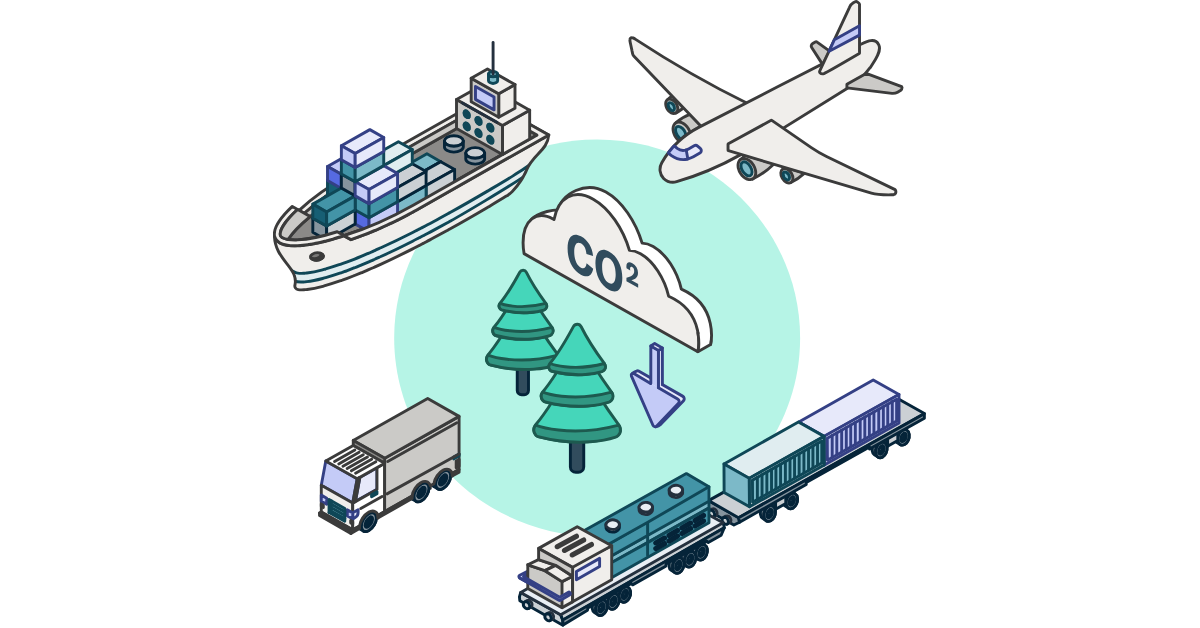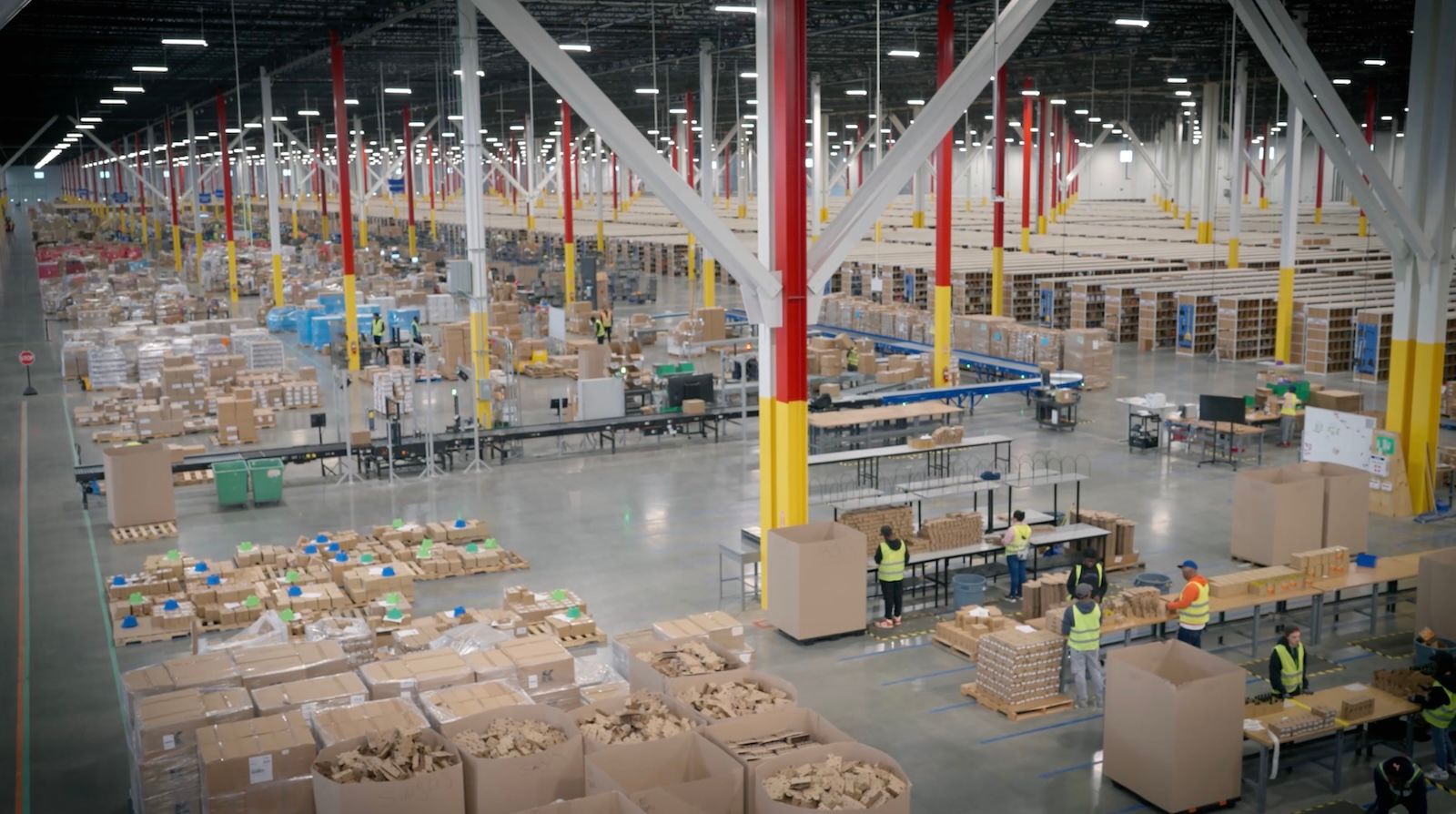
August 15, 2025
Peak Season Planning: 6 Tips for Getting Started
Tags:

August 15, 2025
In the final months of each year, ecommerce merchants face a powerful opportunity to grow their business, reach new customers, and drastically improve their bottom lines during the holiday season, also known as Peak Season.
Peak Season — a period defined by surging consumer demand, especially in the ecommerce space—has rapidly evolved in recent years as consumer demand and expectations increasingly center around more products, faster delivery times, and cheaper delivery fees.
So, how do ecommerce businesses prepare themselves to meet high customer expectations and maximize profits? We will share six essential tips to help online businesses plan and execute their Peak Season strategy.
Tip 1: Focus on Demand Analysis and Forecasting
Before you begin executing your Peak Season plan, ecommerce merchants should thoroughly analyze their sales data to understand product performance, optimal inventory levels, and consumer buying trends from the past year and previous Peak Season. By evaluating seasonal fluctuations, identifying top-performing products, and determining inventory and distribution needs ahead of Peak Season, you can build a better-informed demand plan.
Accurate inventory mapping and SKU ordering help ecommerce merchants avoid expensive reserve storage fees from overstocking and prevent supply chain strain from understocking. Understanding these trends is crucial for maximizing sales by staying in stock, particularly during the high-pressure Peak Season when operational resources are stretched.
Remember, this should not be viewed as a short-term exercise. By performing this analysis on an annual basis, your forecasts will become increasingly accurate over time, positioning your business to take advantage of Peak Season and improve profitability. If you’re already a Flexport client, reach out to your account team so we can advise you on your demand plan ahead of Peak Season.
Tip 2: Communicate with Your Suppliers
Now that you’ve successfully forecasted your inventory needs for Peak Season, it’s crucial that you begin communicating your plan with suppliers and manufacturers as soon as possible. Make sure that you include longer lead times to avoid any product shortages, and give suppliers time to produce and ship products. Bake in time for potential delays further up the supply chain—including materials shortages with manufacturers and congestion at ports. If you do experience a time crunch, air freight can offer fast and flexible delivery speeds to expedite your goods.
Ecommerce businesses should also be aware of the receiving cut-offs with their fulfillment 3PL. Flexport’s key dates for shipping into our fulfillment network during Peak will guide merchants as they replenish inventory and communicate order cut-off dates to their consumers. If you partner with a 3PL to manage your supply chain, proactively communicate your anticipated inbound and consumer order cutoff dates to get ahead of potential bottlenecks.
Finally, be mindful of any upcoming product promotions or new sales channels you may have during Peak Season to ensure your business is sufficiently stocked to meet customer expectations. For example, if you added TikTok as a sales channel this year, make sure you’re preparing for increased demand this Peak Season (versus last Peak Season).
Tip 3: Ramp Up Your Customer Service Team
During Peak Season, your online business will be communicating with customers more than usual. Your customer service team should be prepared to fluently address shipping delays, product promotions, delivery and returns policies, and much more.
In the weeks leading up to Peak, supply your customer service agents with the information and training materials they need regarding shipping cut-off dates, pricing, product promotions, and internal shipping and returns procedures.
Similarly, Flexport will have its customer support team on standby for any help you may need. To get in touch, chat with a member of our support team directly in the Seller Portal during regular business hours, or submit a ticket here.
You should also be regularly stress-testing your website to ensure it can handle increased traffic without buffering or crashing. Ensure customer service resources are readily available and easy to find; a seamless website experience can have a major influence on your customers’ view of your brand and commitment to customer service.
Tip 4: Review Your Supply Chain Technology and Processes
Technology is an ever-expanding and increasingly vital part of the industry, enabling businesses to automate critical processes and reduce resource constraints throughout the supply chain. With this in mind, it’s crucial that ecommerce merchants evaluate their internal processes and the technology stacks powering them to maximize efficiencies throughout their supply chain operations and meet growing demand from customers.
As you ramp up for Peak Season, your business should consider incorporating the following tools into your Peak strategy:
- Ocean Freight - Booking Management: Manage your entire network of ocean contracts and bookings, track real-time performance data and key milestones, and optimize your allocation strategy. This allows for full visibility and control across your ocean freight operations.
- Inventory Management and Automated Replenishment: Store your inventory upstream with reduced costs to avoid excess inventory penalties or high storage costs. Leverage your consolidated inventory to send stock quickly to any destination, and utilize predictive demand planning technology to monitor inventory levels and automatically replenish low stock at fulfillment centers to prevent stockouts during the busiest parts of the year.
- Order Processing and Tracking: Enhance supply chain efficiency and reduce costs through automation and built-in workflows. Merchants can gain product-level insights to optimize processes and increase customer satisfaction by minimizing order and shipping errors and delays.
- Ecommerce Fulfillment: Increase your sales by selling across major ecommerce marketplaces, such as Amazon and Walmart Marketplace. Leverage a diversified network of distribution centers that can ensure inventory meets fluctuating demand levels from different sales channels. If you can, merchants should take advantage of fast delivery speed promises, like Shop Promise and Flexport's Fast Tags, to drive sales and improve the customer experience.
- Wholesale Fulfillment: Merchants should focus on flexible storage solutions that can prevent costly stockouts to meet demand from wholesale partners. Consider working with a 3PL partner that can streamline operational touchpoints and deliver a consistent customer experience across D2C and B2B segments. They can also help avoid costly chargebacks associated with inaccurate order processing and routing guide non-compliance.
- Returns Management: Merchants should consider using a single returns management partner to streamline restocking and processing. This allows for greater control of returned inventory, moves returns back to inventory faster, and can be managed all under one roof. A smooth returns process means your team can focus more on growth and less on logistic complexities.
If you identify gaps in your supply chain processes, or in the technology stack supporting them, it may be worth partnering with a trusted 3PL provider like Flexport, who can help you coordinate your shipments, automate back-end processes, and integrate with major wholesale seller channels.
Tip 5: Take Advantage of a Distributed Warehouse System
A distributed warehouse system enables merchants to use multiple fulfillment centers to ensure that inventory is stored close to high-demand areas, reducing shipping times and costs. By leveraging a distributed warehouse system, you can provide customers with fast shipping options at lower costs for both your business and your end-consumers.
The easiest way for ecommerce businesses to take advantage of distributed warehouses is to partner with a 3PL. Flexport, for example, pairs a network of distributed warehouses with AI-predictive demand planning software to deliver fast, flexible shipping nationwide. This can help accelerate sales, reduce strain on internal demand planning resources, and help your business scale without additional costs or complexity.

Tip 6: Establish and Refine Returns Management
Returns are inevitable. In fact, at least 30% of online purchases are returned, compared to just 8.9% of brick-and-mortar purchases. With this in mind, it’s clear that making a smooth, simple returns process can be a strong differentiator for brands in the ecommerce space.
So, how can merchants ensure that this critical component of the ecommerce experience runs smoothly?
We recommend partnering with a trusted 3PL, whose advanced shipping and fulfillment services can take pressure off of internal resources and create a seamless returns experience for businesses and customers.
Flexport Returns, for example, works as your dedicated returns management partner. It enables greater control of your returned inventory, and can be managed all under one roof. By directly integrating with major returns partners—like Loop, ReturnGo, Narvar, and more—Flexport Returns can restock inventory within three business days. This eliminates manual returns inspections and tedious back-and-forth with buyers, saving your business time and money during Peak Season.
Your ecommerce business should also establish multiple quality assurance checkpoints throughout the shipping process. This will help cut down on the number of returns you need to manage, and deliver an exceptional, high-end customer experience. Remember to review these checkpoints regularly, and use data to refine processes across the board—including packing, shipments, and returns.
Ready to Get started? Flexport Can Help.
At Flexport, we strive to provide merchants with the logistics support they need to tackle Peak Season. Our fulfillment experts can help you refine your shipping, tracking, and returns procedures, so you can focus on building a memorable brand experience that will drive sales and delight your customers.
Talk with a fulfillment expert today to learn more about Flexport’s competitive shipping and logistics services.
About the Author

August 15, 2025





